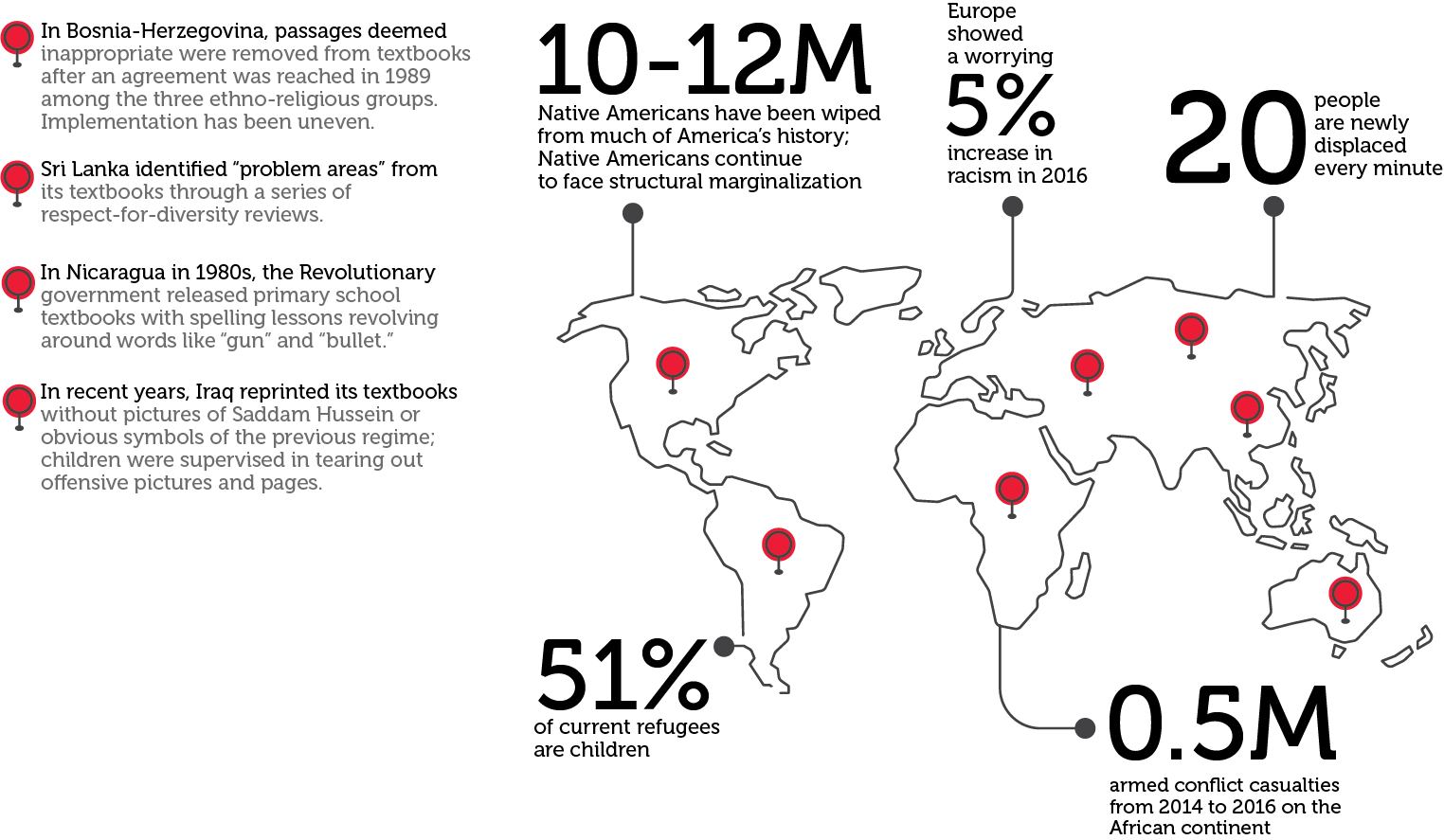The reach of divisive stereotypes
The problem of divisive stereotypes in textbooks affects students in classrooms around the world, in both public and private schools, at every year of primary and secondary education, and in every curricular or “ability”-based track within a grade level. Millions of children and youth worldwide are being exposed to divisive stereotypes, and are learning how to think about themselves and others through these negative narratives and images.
When they grow up, they will go on to become leaders, decision makers, parents, and neighbors. In fact, many of today’s leaders and decision makers have been exposed to divisive stereotypes written into the primary and secondary school textbooks used in the past. Unfortunately, we are all affected and, if no action is taken, future generations will continue to be exposed to these divisive ideas and images.
“[M]any of today’s leaders and decision makers have been exposed to divisive stereotypes...”
Textbooks and conflict
In countries or regions marked by conflict and/or widespread violence against particular social and political groups, the issue of divisive stereotypes in textbooks is more pertinent still, as it may be a pivotal factor in the extension of hostilities or the initiation of trust-building and reconciliation. As of December 2016, an estimated 535 million children are living in countries impacted by conflict and disaster, which amounts to one in four children across the world (UNICEF 2016).

